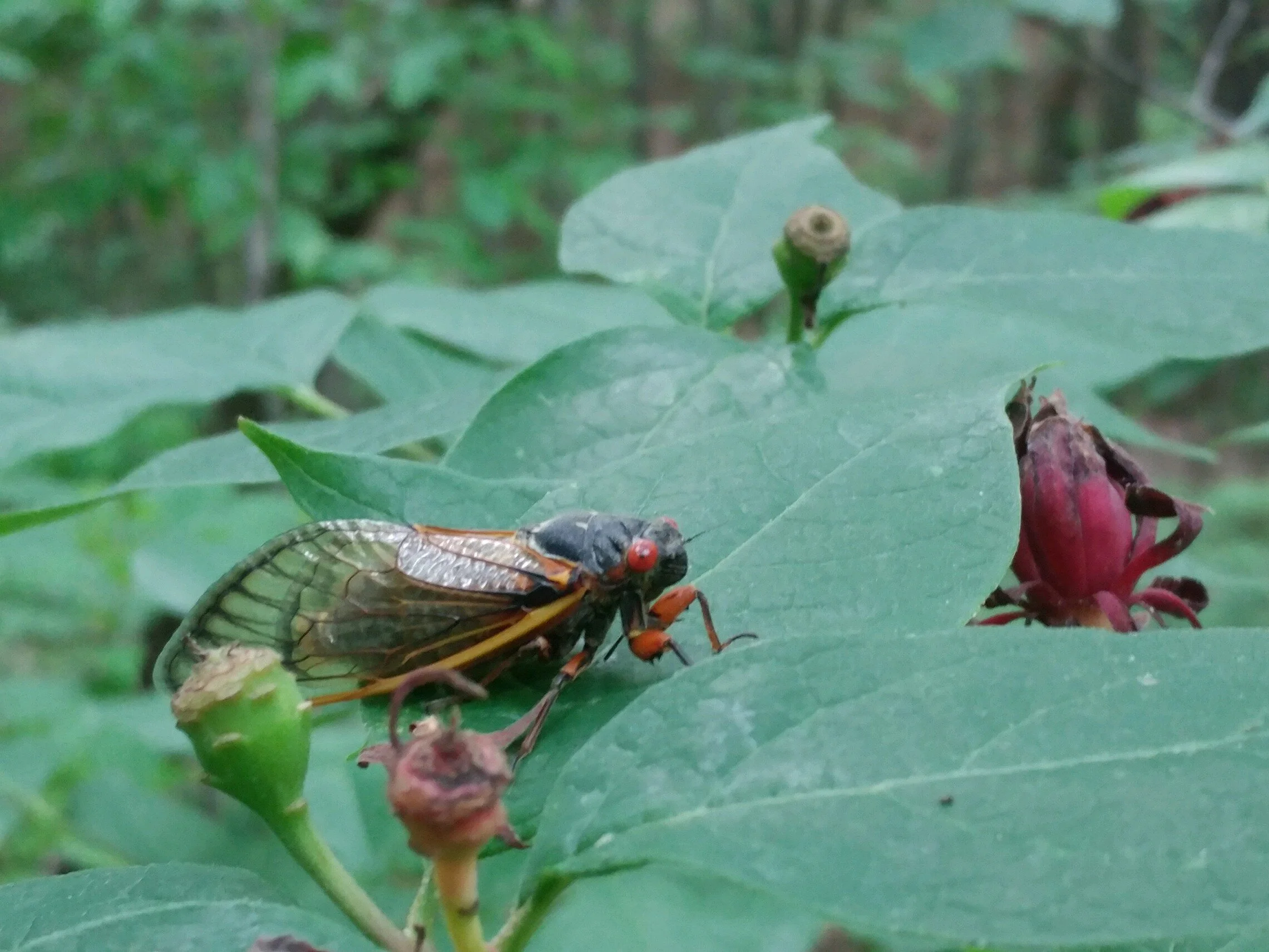What's the buzz about?
Brood X Cicada Hatch
By Eliot Berz
You’ve likely caught wind of the excitement surrounding the Brood X cicada hatch. This summer, billions of cicadas will be emerging across the eastern United States from a 17-year stint underground. The majority of these insects’ lives are spent in the nymph stage feeding and waiting for their internal clock to strike 17 years initiating their emergence from the soil. The final trigger to emerge comes as soil temperatures reach 64 °F which generally occurs in the southeast in May and June. Once above ground, the cicadas depart from their exoskeletons and enter their short-lived adult stage to mate then perish. The adults will lay their eggs in tree branches, then once hatched, the hatchlings will immediately return to the soil for the next 17 years. There are multiple species of cicadas, and some of these species differ in their emergence cycle. The green annual cicadas you see each year are of a different species than the periodical Brood X cicadas. Some of the periodical cicada species emerge every 17 years while the others emerge every 13 years. “Brood” refers to groups of cicadas that emerge on the same year. Not all cicadas time this emergence perfectly, but the vast majority stay true to their distinct 17- or 13-year cycles.
The classic sound of the male cicada is referred to as “chorusing.” This sound is made by vibrating an organ on the side of the abdomen known as the tymbals. To the cicadas, the male’s noise is a sweet serenade for potential mates, but it’s the dinner bell to an array of other wildlife. The billions of love-struck insects provide a feast like no other to snakes, birds, fish, other insects, and all kinds of mammals, including people!
The areas with the largest concentration of cicadas will be confined to three regions: southeast Pennsylvania and Maryland, Indiana and eastern Ohio, and western North Carolina and eastern Tennessee. Although we may not see as high densities in the Tennessee River Gorge as the regions north of us, swarms of cicadas have already surfaced in our area. The loud, swarming insects may seem menacing, but have no fear. These harmless critters provide a rare spectacle that should be enjoyed. From a surplus of nutrition for wildlife to nitrogen for the soil, they play an important part in our ecosystem. Next time you hear the cicadas chorusing, consider the bewildering behaviors that these critters are exhibiting in front of our very eyes. After a 17 yearlong wait underground, it’s only appropriate that their song is fervent and loud. Let’s welcome this addition to the forest’s choir with open arms as they sit in the treetops singing their love songs this summer.



